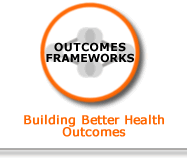Summary
There is review-level evidence that recovery capital (social, physical, human and cultural resources) assists, enables and supports positive outcomes for individuals seeking to overcome drug dependence.
Rationale
The Advisory Council on the Misuse of Drugs (ACMD, 2012) [1] refers to Granfield and Cloud’s (2001) definition of recovery capital as the ‘breadth and depth of internal and external resources that can be drawn upon to initiate and sustain recovery’ from substance misuse (dependency). The ACMD cite Granfield and Cloud’s (2009) four components of recovery capital as follows:
Social capital is defined as the sum of resources that each person has as a result of their relationships, and includes both support from and obligations to groups to which they belong; thus, family membership provides supports but will also entail commitments and obligations to the other family members.
-
Physical capital is defined in terms of tangible assets such as property and money that may increase recovery options (e.g. being able to move away from existing friends/networks or to fund an expensive detox service).
-
Human capital includes skills, positive health, aspirations and hopes, and personal resources that will enable the individual to prosper. Traditionally, high educational attainment and high intelligence have been regarded as key aspects of human capital, and will help with some of the problem-solving that is required on a recovery journey.
-
Cultural capital includes the values, beliefs and attitudes that link to social conformity and the ability to fit into dominant social behaviours.
NICE Clinical Guidelines for Drugs Misuse: Psychosocial Interventions (CG51) recommendations for implementation include that staff should routinely provide people who misuse drugs with information about self-help groups.[2]
An evidence review conducted by Best et al (2010) and commissioned by Scottish Government following publication of the national drug strategy concluded that recovery capital (an individual’s assets) is the best predictor of sustained recovery. [3]
There is limited evidence from small-scale studies that a community reinforcement approach (CRA) with abstinent-contingent incentives is effective for cocaine addiction and limited evidence from one study that this approach is effective in opioid detoxification. For methadone maintenance, there is also evidence from one study that single CRA (i.e. without incentives) is more effective than usual care. [4]
|
References:
-
Advisory Council on the Misuse of Drugs (ACMD, 2012) Recovery from drug and alcohol dependence: an overview of the evidence. London: ACMD.
-
National Institute for Health Care Excellence (NICE, 2011) Clinical Guidelines 51: Drugs Misuse: Psychosocial Interventions. London: NICE. Best, D. Rome, A. Hanning, K.A. White, W. Gossop, M. Taylor, A. Perkins, A. (2010) Research for Recovery: A Review of the Drugs Evidence Base. Edinburgh: Scottish Government. -
Roozen HG, Boulogne JJ, van Tulder MW, van den Brink W, De Jong CAJ, Kerhof AJFM. A systematic review of the effectiveness of community reinforcement approach in alcohol, cocaine and opioid addiction. Drug and Alcohol Dependence. 2004:74.
|


